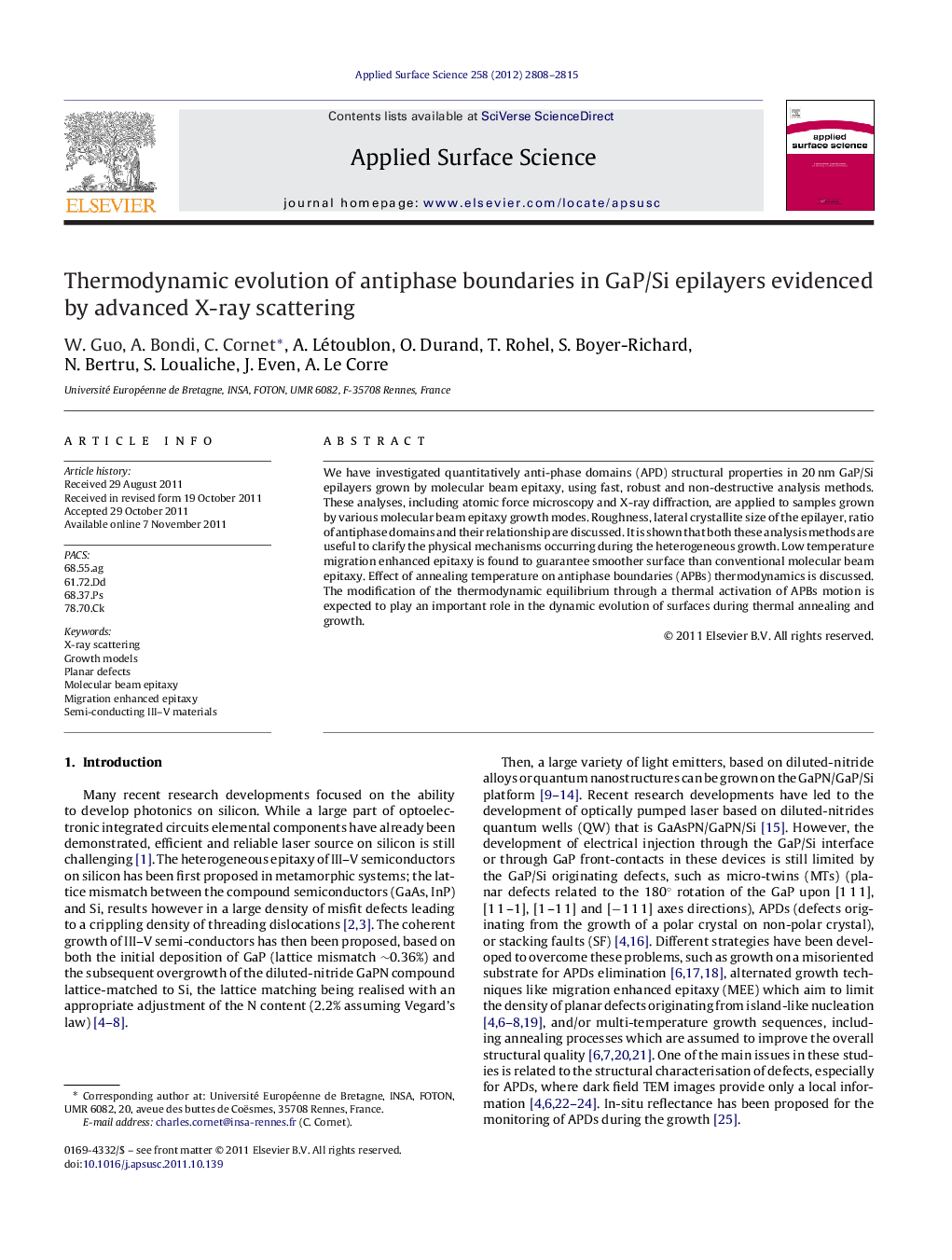| Article ID | Journal | Published Year | Pages | File Type |
|---|---|---|---|---|
| 5366549 | Applied Surface Science | 2012 | 8 Pages |
We have investigated quantitatively anti-phase domains (APD) structural properties in 20Â nm GaP/Si epilayers grown by molecular beam epitaxy, using fast, robust and non-destructive analysis methods. These analyses, including atomic force microscopy and X-ray diffraction, are applied to samples grown by various molecular beam epitaxy growth modes. Roughness, lateral crystallite size of the epilayer, ratio of antiphase domains and their relationship are discussed. It is shown that both these analysis methods are useful to clarify the physical mechanisms occurring during the heterogeneous growth. Low temperature migration enhanced epitaxy is found to guarantee smoother surface than conventional molecular beam epitaxy. Effect of annealing temperature on antiphase boundaries (APBs) thermodynamics is discussed. The modification of the thermodynamic equilibrium through a thermal activation of APBs motion is expected to play an important role in the dynamic evolution of surfaces during thermal annealing and growth.
⺠It is here demonstrated that APD can be detected with simple X-ray lab experimental setups in heterogeneous growth. ⺠It is shown that statistical information can be extracted to understand how the APD modify thermodynamics of the growth. ⺠Finally, a link is made between the observed roughness of the samples and APDs and a new growth mechanism is proposed.
